Verena Schlieckau
Year of birth: 1989.
Where do you live: Germany.
Your education: educator and atelier teacher.
Describe your art in three words: figurative – narrative – personal.
Your discipline: visual arts / painting – drawing – illustration.
Instagram
How does motherhood affect your art and creativity?
Balancing painting and creativity with motherhood is a rewarding but challenging experience. I’ve found that integrating art into my daily life, rather than seeing it as something separate, has been key to maintaining my creative practice while being a mother. Motherhood itself has become a rich source of inspiration. The emotions, experiences, and even the challenges of raising children have deeply influenced my work. I often find myself painting themes related to family, growth, and the passage of time, channeling my personal journey into my art. Motherhood requires flexibility, so I’ve learned to work in shorter, more focused bursts rather than relying on long, uninterrupted periods of time. I often paint during nap times, early mornings, or late at night when the house is quiet. A sidetable as creative space in my home helps me stay in touch with my art. It’s a place where I can leave my work out and return to it whenever I have a moment. I enjoy creating digital art lately. It’s easy to set up and I can gather ideas in a short amount of time so I can just pick up the iPad and draw. I involve my daughter in the creative process whenever possible. We paint, draw, and craft together, turning creativity into a shared experience. Not only does this nurture their own artistic interests, but it also allows me to stay connected to my art in a way that feels natural and joyful. I’ve learned to be kind to myself and accept that there will be periods where my art takes a backseat to parenting. I remind myself that creativity isn’t lost during these times—it’s just waiting for the right moment to resurface.
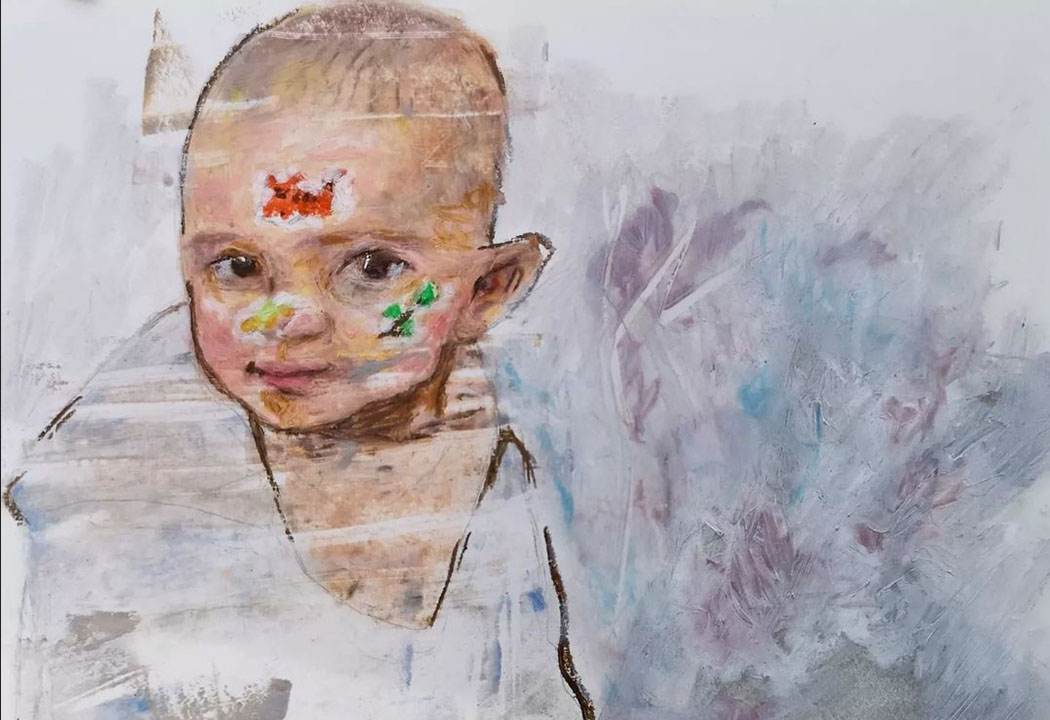 Schlieckau Verena | Stickernase | 2022
Schlieckau Verena | Stickernase | 2022
How did you develop your skills as a self-taught artist? Were there any particular challenges or milestones in your learning process?
I developed my skills as a self-taught artist through a combination of experimentation, practice, and studying the work of others. Initially, I spent a lot of time simply experimenting with different materials and techniques, allowing myself the freedom to make mistakes and learn from them. Without formal education, I lacked structured guidance on fundamental techniques, art history and critique, which made the learning process slower and more fragmented.
I compensated by studying books, online tutorials, and observing the work of established artists. I also experimented constantly, learning through trial and error.
Without the validation or feedback from teachers and peers that comes with formal education, I often struggled with self-doubt. It was easy to feel isolated. Connecting with online art communities, attending workshops, and seeking out constructive criticism helped me build confidence and realize that growth is a continuous process.
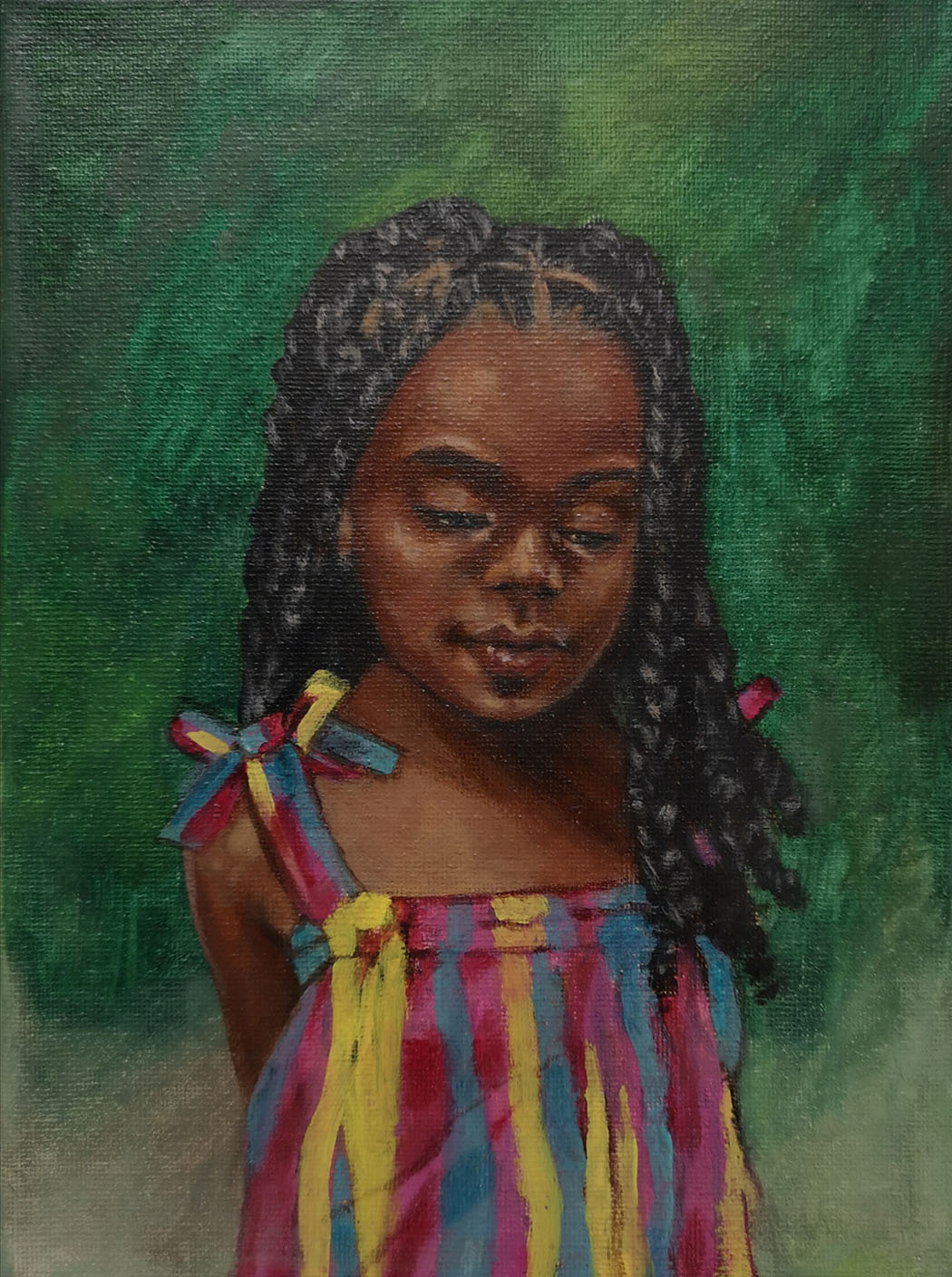 Verena Schlieckau | E’riah Isabel | 2024
Verena Schlieckau | E’riah Isabel | 2024
How do you decide on the themes or subjects of your artwork?
The question is very easy to answer at the moment: as a mother, my reality in life revolves around my little daughter. She brings out many facets in me that I deal with, and I see her with all my heart – so she is of course my most painted model. Otherwise, I am very interested in portraiture – I have always been very interested in figurative drawing. Faces tell stories, or stories are told about them. We recognize gestures and facial expressions. Portraits are contemporary witnesses of our society.
My transition from drawing comics to painting portraiture was a natural evolution driven by my desire to explore deeper emotional and psychological layers in my art.
When I first started with drawing comics, I was drawn to the storytelling aspect and the ability to convey a narrative through a sequence of images. Comics allowed me to play with characters, expressions, and scenarios in a way that was dynamic and engaging.
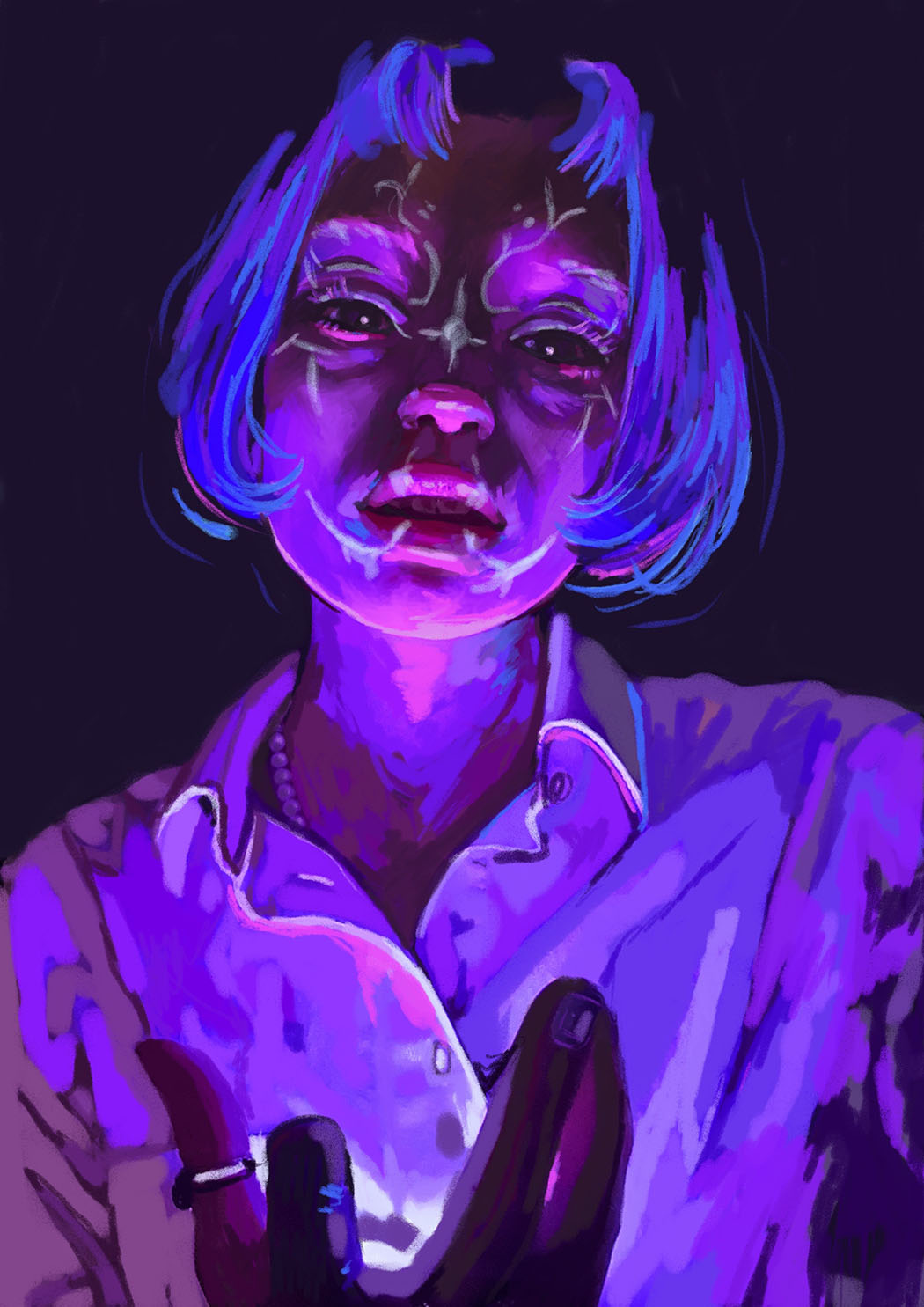 Verena Schlieckau | Mira Luna
Verena Schlieckau | Mira Luna
As an Atelier teacher and kindergarten educator, how do you integrate art into your teaching?
As an atelier teacher and kindergarten educator, I integrate art into my teaching by using it as a tool to enhance creativity, communication, and learning across various subjects.
I encourage children to use art to express their feelings and ideas, especially when words might be challenging. Through drawing, painting, and crafting, we learn to communicate emotions and stories, developing both their artistic and emotional intelligence. I create an environment where imagination is valued. I give children open-ended projects with minimal restrictions, allowing them to explore materials and ideas freely. This helps them to develop problem-solving skills and the confidence to think creatively. Art projects provide a break from more structured activities and allow children to relax and have fun. By integrating art into my teaching, I aim to nurture well-rounded individuals who appreciate creativity and can apply it in various aspects of their lives. Children teach us art as self-expression and a means of communicating with ourselves and the environment. They leave traces, paint and paint over, create out of instinctive interest and thought processes. They make what is available to them their own.
This is the greatest inspiration we can take from children’s creativity: Art from the joy of creating, the fulfillment of working in flow. A prepared environment that invites you to create and play is prepared with stimulating materials and suitable tools.
In my courses and in my work in general, I attach great importance to a safe, affirming environment. The focus is on the process, not the result.
Problem-solving strategies are developed, and children explore their personalities through design. Painting promotes patience, fine motor skills, reduces stress and improves memory and self-confidence – all things that we as adult artists like to remember from time to time. Children usually know what they want to express – or they find out through the act of creating. I pave the way for them through my knowledge and a supportive attitude. I give impulses to stimulate creativity.
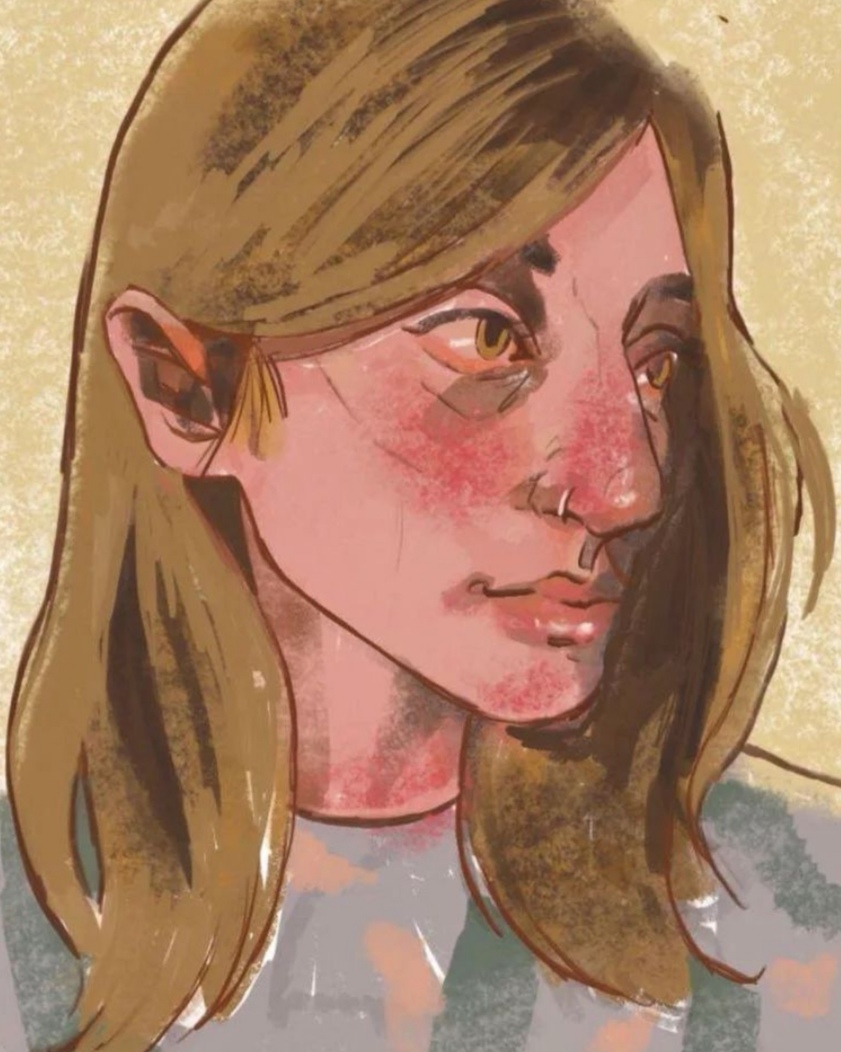 Schlieckau Verena | Nicole | 2023
Schlieckau Verena | Nicole | 2023
Are there any particular messages or emotions you aim to convey through your artwork?
I try to give the viewer a little reason to look and linger. They may not only see the portrait of a stranger but also recognize parts of themselves in it or fragments of their own stories. That’s why I believe that the feelings or messages that my pictures convey are as diverse as the viewers themselves. There is always an interaction between the image and the viewer. To feel someone seen: As they are or as they could be or as something that might been forgotten.
“Every art requires two people: one who makes it and one who needs it.” – Ernst Barlach

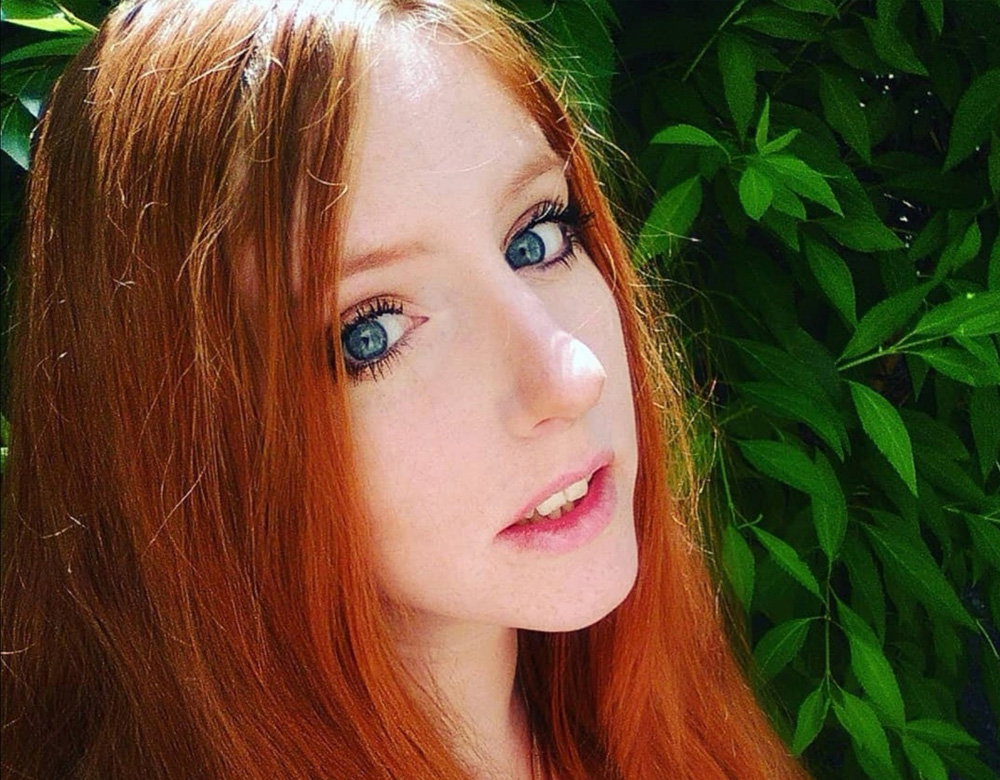
Leave a Reply